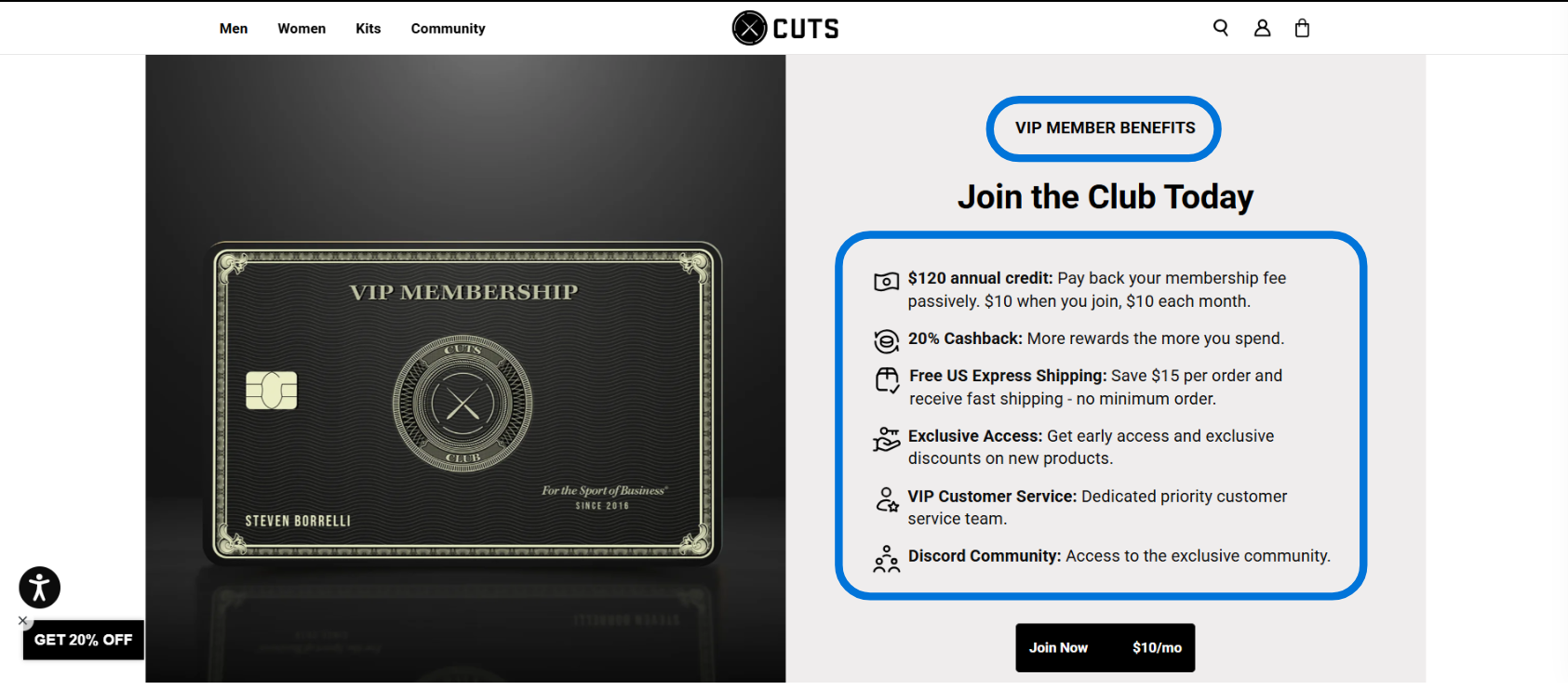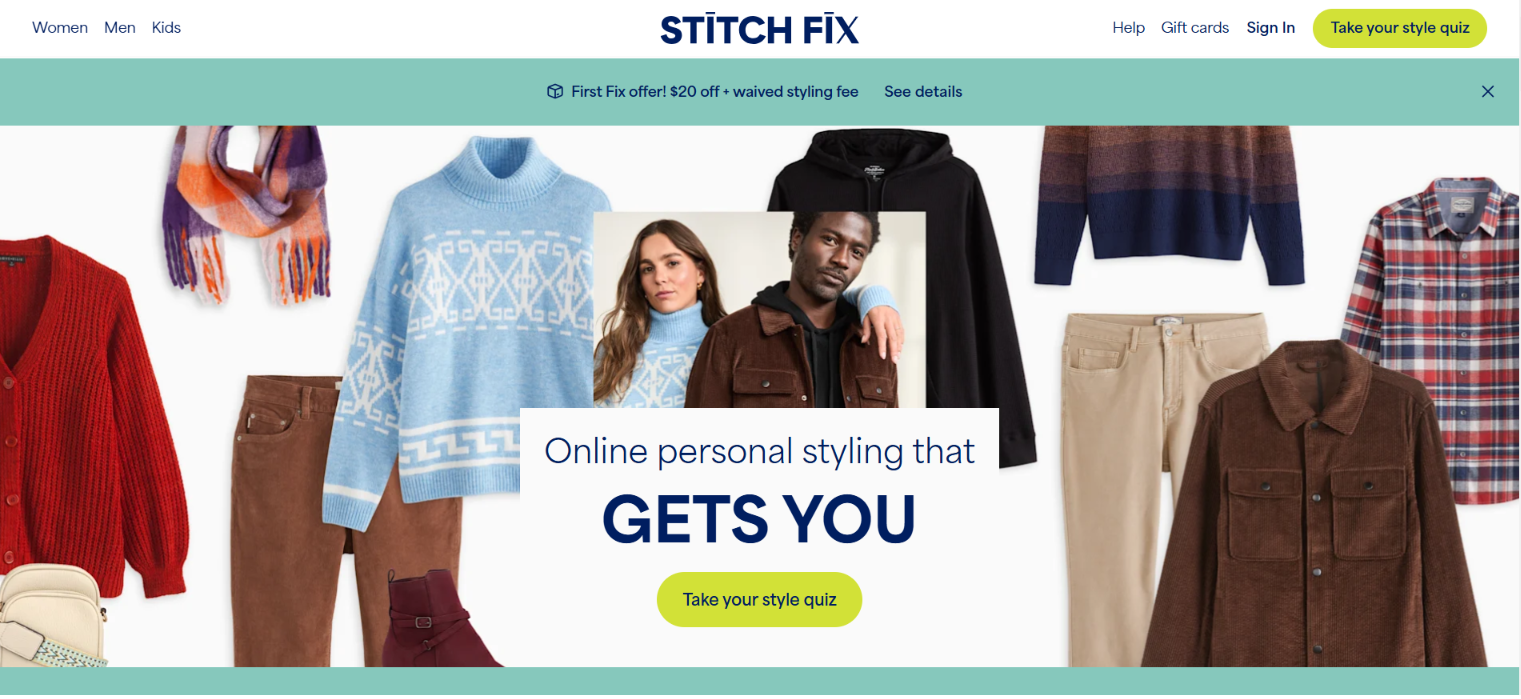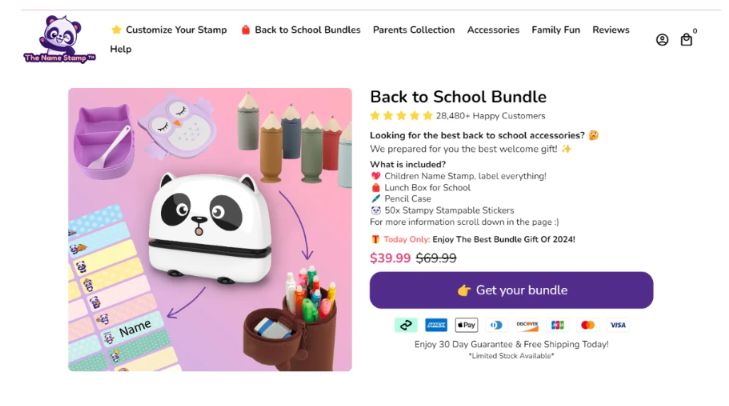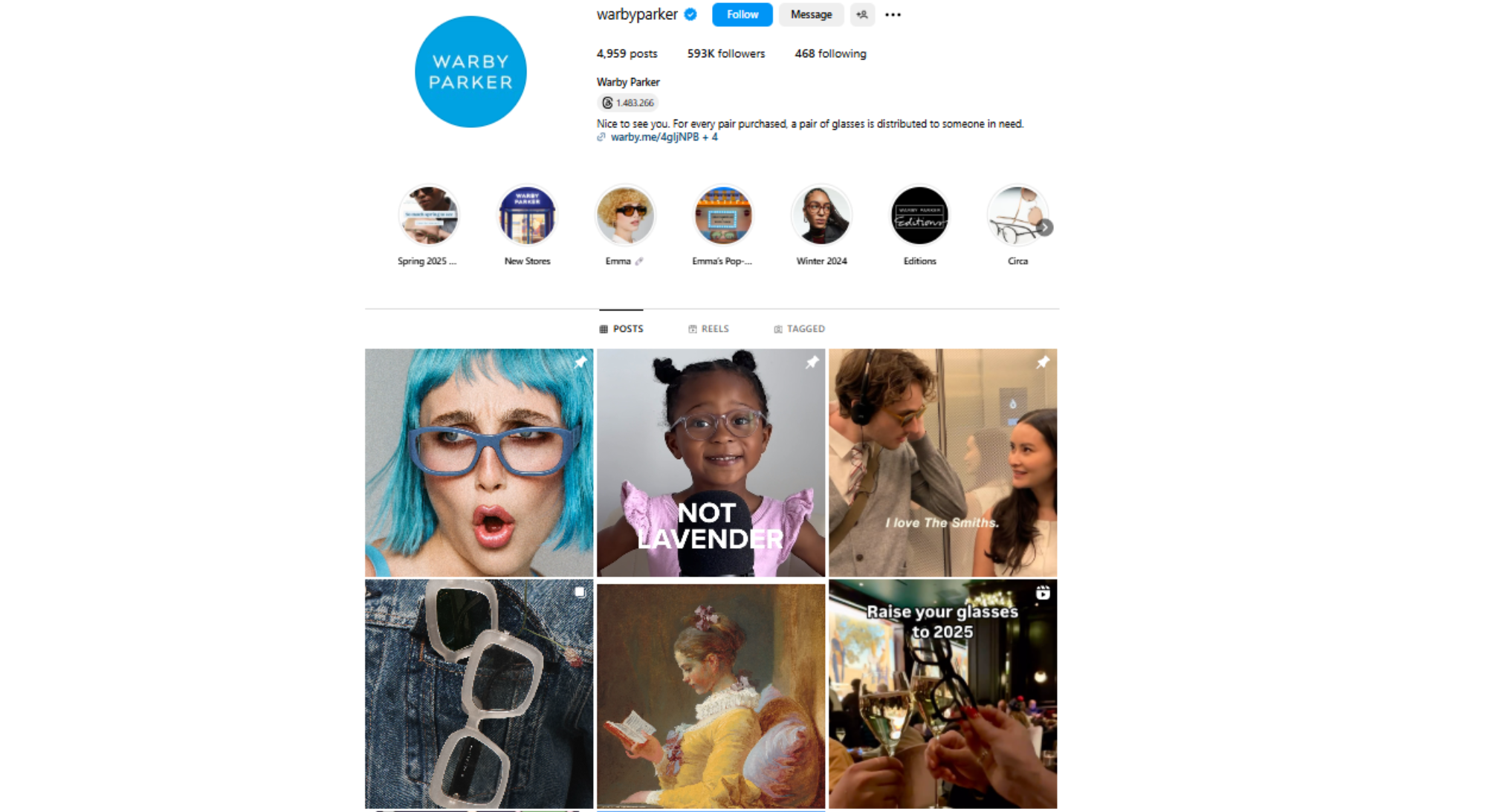DTC marketing is simply brands selling their products straight to customers without any middlemen.
More shoppers chose DTC brands every day, driving U.S. sales to $213 billion in 2024.

This guide will walk you through the best DTC marketing examples from experts and real-life case studies that actually work.
Before exploring each example, let’s review the top DTC marketing examples & trends in 2025:
| Store Names | What It Means | Takeaway for Brands |
| Omnichannel Marketing | Seamless shopping across online, mobile, and in-store. | Keep your messaging consistent across all channels. |
| Personalization | Tailored products and recommendations for customers. | Use tools like quizzes to enhance personalization. |
| Subscription Models | Regular deliveries and exclusive member perks. | Combine subscriptions with loyalty rewards. |
| User-Generated Content | Customers sharing photos, reviews, and experiences. | Feature customer content to build trust. |
| AI and Automation | Technology-driven ads, chatbots, and product suggestions. | Automate tasks and personalize experiences. |
| Sustainable Marketing | Focus on eco-friendly and ethical practices. | Showcase your sustainability efforts creatively. |
Top 10 DTC Marketing Examples + Case Studies
Top DTC brands use these marketing examples to drive growth and build customer loyalty.
Here’s what works in 2025:
DTC Marketing Works Best With Omnichannel

Smart DTC brands know customers shop everywhere - online, mobile, and in stores.
That’s why connecting all these channels creates a smooth shopping experience.
Brands that keep their message and experience consistent across all channels see customers coming back more often.
🎯 Bonus Content: Explore the Top DTC and SaaS Events in 2025 to discover innovative strategies, expert insights, and networking opportunities to improve your brand this year!
DTC Success Story: Brooklinen’s Omnichannel Marketing Example
Brooklinen shows effective omnichannel marketing by connecting their online presence with physical stores and social media touchpoints.
The brand maintains consistent messaging about quality and value across all channels, from their website to social media to retail locations.
They cleverly use each platform’s strengths - educational content on their website, lifestyle content on social media, and hands-on experience in stores.
What DTC Brands Can Learn:
- Keep your brand message consistent across all platforms
- Use each channel’s unique strengths
- Connect online shopping with physical store experiences
- Create content that works for different platforms while maintaining brand voice
Personalize More, Sell More in DTC

Making your customers feel special isn’t just nice - it’s essential for DTC brands.
Smart brands offer different options and recommendations based on what each customer wants.
By providing personalized product bundles, they help customers find their perfect match easily. This is why it is one of the top DTC marketing examples of 2025.
DTC Success Story: Kylie Cosmetics and Their Personalization Options
Kylie Cosmetics shows the power of personalization in DTC marketing with their Natural Blur Powder Foundation.
The brand offers detailed shade matching with specific undertone descriptions, making it easy for customers to find their perfect match.
They’ve also smartly bundled complementary products while keeping personalization options for each item.
What DTC Brands Can Learn:
- Create detailed product descriptions that help customers find their exact match
- Bundle complementary products while keeping personalization options
- Use specific, clear language about product variations
- Include shade finders or matching tools on your website
Use Subscription Models To Drive DTC Growth

Getting repeat customers is easier with subscription offers. Regular deliveries, member discounts, and special perks keep customers coming back.
Many DTC brands find that subscriptions bring in steady revenue and help predict inventory needs more effectively, which is why subscription models are a textbook example of great DTC marketing in 2025. Plus, subscribers often become your most loyal customers.
DTC Success Story: Blumetopia Builds Growth Through Smart Subscriptions
Blume shows how to make subscription models more appealing by creating an engaging loyalty program called “Blumetopia.”
The brand combines subscriptions with a points system that rewards multiple customer actions - from making purchases to social media engagement.
They make earning points fun and accessible, with clear rewards tiers and exclusive perks that encourage long-term customer relationships.
What DTC Brands Can Learn:
- Create engaging names for your loyalty programs
- Reward multiple types of customer engagement, not just purchases
- Make rewards tiers clear and achievable
- Offer exclusive benefits that encourage subscription sign-ups
Build DTC Communities

Small, focused communities often bring better results than trying to reach everyone.
Create special groups around your brand’s interests, run exclusive events, and offer member-only benefits. These loyal customer groups become your best brand advocates.
DTC Success Story: Cuts Clothing Masters Community Building
Cuts Clothing shows how to build a strong community through their Cuts Club membership program.
They’ve created two tiers of membership (VIP and Legacy) that make customers feel part of an exclusive group while offering valuable benefits. This highlights Cuts Clothing’s use of innovative DTC marketing examples.
What DTC Brands Can Learn:
- Create different membership tiers to suit various customer needs
- Combine practical benefits with community features
- Make members feel exclusive with early access and VIP service
- Build a community platform where customers can connect
Apply AI To Scale DTC Marketing

Smart technology stands out as one of the leading DTC marketing examples shaping 2025.
Chatbots handle customer questions 24/7, while AI helps target ads to the right people and suggest products customers actually want.
🎯 Bonus Content: Don’t miss our guide on the Top AI Tools for Ecommerce featuring 16 tools and real case studies to supercharge your business!
DTC Success Story: Stitch Fix Scales Personalization With AI
Stitch Fix demonstrates the power of AI in DTC marketing with their style quiz feature.
The brand uses AI to analyze customer preferences and create personalized style recommendations at scale.
By combining customer input through quizzes with AI analysis, they’re able to provide tailored product suggestions that feel personal yet are automated for efficiency.
What DTC Brands Can Learn:
- Use AI to make personalization possible at scale
- Create interactive experiences like quizzes to gather customer data
- Let AI handle repetitive tasks while keeping a personal touch
- Use customer input to improve AI recommendations over time
Smart Content Marketing Grows Your Brand

DTC brands that nail their content example see more website visits, better trust, and higher sales.
You can create how-to guides, product videos, or helpful tips that solve your customers’ problems.
Plus, when you combine this with good SEO, you’ll show up higher in search results and get more organic traffic.
DTC Success Story: Away Masters Content Marketing
Away uses effective content marketing by creating valuable winter travel guides that perfectly align with their product offerings.
The content addresses real customer needs - from choosing destinations to packing efficiently - while maintaining SEO value with relevant keywords.
What DTC Brands Can Learn:
- Create content that solves real customer problems
- Mix practical advice with product recommendations naturally
- Focus on topics directly related to your products
- Write detailed guides that help customers at different stages (planning, buying, using)
User Generated Content Grows DTC Sales Fast

Nothing sells better than happy customers showing off your products.
When your customers share photos, reviews, or posts about your products, other shoppers trust these more than regular ads.
Try creating special hashtags for your brand or featuring customer photos on your website.
🎯 Bonus Content: Discover the Best Time to Post on TikTok in 2025 and maximize your engagement!
DTC Success Story: Fashion Nova Wins With UGC
Fashion Nova leverages user-generated content on TikTok and Instagram to connect with Gen Z and millennial shoppers authentically.
The brand encourages customers to share their Fashion Nova looks and experiences, creating a constant stream of real-world content.
What DTC Brands Can Learn:
- Encourage customers to create and share content on platforms where your target audience spends time
- Use platform-specific features (like TikTok trends or Instagram Reels)
- Repost customer content to build trust and authenticity
- Engage with your community through comments and shares
Seasonal Campaigns Lead To DTC Success

Timing is everything in DTC marketing.
Special events and holidays give you perfect chances to create exciting, limited-time offers.
You can run early-bird deals, create special product bundles, or launch themed campaigns that make customers want to buy right away.
DTC Success Story: Name Stamp Nails Back-to-School Season
Name Stamp shows how timing seasonal promotions perfectly can boost DTC sales with their back-to-school bundle example.
By grouping popular items into a “Best Welcome Gift” bundle and offering a significant discount (from $69.99 to $39.99), they made it easy for parents to make quick purchasing decisions.
🎯 Bonus Content: Get ready for the season with our insights on Halloween Shopping Trends and Black Friday Shopping Trends to boost your sales strategies!
What DTC Brands Can Learn:
- Create bundles that solve seasonal customer needs
- Offer meaningful discounts during peak shopping periods
- Give seasonal promotions compelling names that connect with buyers
- Make purchasing decisions easier by bundling related items
Grow Your DTC Brand On Social Media

DTC brands can’t ignore social media’s power to reach customers directly.
From shoppable posts to live selling events, social platforms help you connect and sell better.
Mix regular posts with paid ads to reach more people, and use direct messages to build stronger customer relationships.
DTC Success Story: Warby Parker Owns Social Media Marketing
Warby Parker stands out on social media by creating content that perfectly matches their eyewear-loving audience.
They blend trendy formats with their brand personality, showing glasses in real-life situations and staying relevant without trying too hard. This is a strong indicator of Warby Parker’s use of effective DTC marketing examples.
The brand maintains its professional image while keeping up with social media trends, making eyewear shopping feel both fun and trustworthy.
🎯 Bonus Content: Learn the Best Time to Post on Instagram to ensure your content reaches the right audience and drives maximum engagement!
What DTC Brands Can Learn:
- Stay true to your niche while following trends
- Create content that reflects your target audience’s lifestyle
- Balance professional brand image with engaging social content
- Keep content authentic to your product category
Show Your Values Through Sustainable DTC Marketing

Modern shoppers care about more than just products - they want brands that share their values.
Use eco-friendly packaging, be open about where your products come from, and show how your brand helps the environment.
DTC Success Story: Trashy Chips Leads With Sustainability
Trashy Chips is a perfect example of showing how to build a DTC brand around sustainability values.
They’ve turned food waste into a compelling brand story, making upcycled vegetable chips feel exciting and purposeful.
The brand communicates their eco-friendly mission through playful messaging (“Eat Trashy, Without the Junk”) while being transparent about their sustainable practices and impact.
What DTC Brands Can Learn:
- Make sustainability part of your core brand story
- Use creative messaging to make eco-friendly choices appealing
- Be transparent about your environmental impact
- Turn sustainability features into selling points
FAQ: Top 10 DTC Marketing Examples in 2025
Here are the frequently asked questions about the Top 10 DTC Marketing Examples in 2025:
What are the best DTC marketing examples to use in 2025?
The best DTC marketing examples in 2025 include omnichannel marketing, personalization, subscription models, user-generated content, and sustainable marketing practices. These DTC marketing examples help ecommerce businesses create seamless shopping experiences, build customer loyalty, and drive long-term growth.
What are some top DTC marketing examples for ecommerce businesses?
Top examples include Brooklinen’s omnichannel approach, Kylie Cosmetics’ personalized product offerings, and Stitch Fix’s use of AI for tailored recommendations. These brands demonstrate how successful DTC marketing campaigns can effectively target and engage customers.
How do successful DTC marketing campaigns build customer loyalty?
Successful DTC campaigns use personalization, subscription models, and community-building to foster strong relationships with customers. For example, Blume’s “Blumetopia” program combines rewards with subscriptions to keep customers engaged and loyal.
What are the latest DTC marketing strategies and trends in 2025?
Key trends include the integration of AI and automation, the rise of sustainable marketing, and the importance of micro-communities. These trends highlight how DTC brands are evolving to meet customer expectations and industry changes.
Why is omnichannel marketing important for DTC brands?
Omnichannel marketing allows DTC brands to provide a seamless shopping experience across online, mobile, and in-store platforms. It ensures consistent messaging and increases customer retention, as seen in Brooklinen’s successful example.
How can ecommerce businesses create successful DTC marketing campaigns?
To create successful DTC campaigns, ecommerce businesses should focus on personalization, leverage user-generated content, and optimize seasonal promotions. Combining these strategies ensures maximum engagement and sales growth.
What role does user-generated content play in DTC marketing strategies?
User-generated content builds trust and authenticity for DTC brands. Encouraging customers to share photos, reviews, and experiences helps brands connect with their audience, as seen in Fashion Nova’s successful campaigns.
What are some DTC marketing examples and trends for ecommerce startups?
Startups can benefit from focusing on personalization, using subscription models, and implementing AI to scale operations. These DTC marketing examples, combined with sustainable practices, align with the latest DTC marketing trends in 2025.
How can ecommerce brands use AI in DTC marketing strategies?
AI can help DTC brands by automating tasks, providing targeted ads, and delivering personalized product recommendations. Stitch Fix’s use of AI to create tailored style suggestions is a prime example of this trend.
What makes seasonal campaigns successful for DTC brands?
Seasonal campaigns succeed by offering timely, limited-time promotions that address specific customer needs. For example, bundling popular products for holidays or back-to-school events ensures higher sales and customer satisfaction.
Summary
In 2025, successful DTC marketing examples focus on personalization, omnichannel experiences, and using trends like AI and sustainability to connect with customers.
By learning from top DTC marketing examples and implementing these DTC marketing examples, ecommerce businesses can build loyalty and drive growth.
Stay adaptable, innovative, and customer-focused to thrive in the evolving DTC landscape.

































